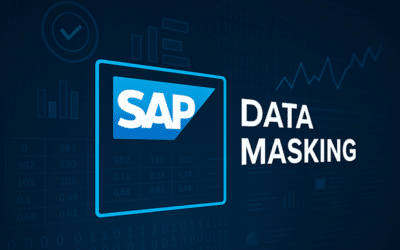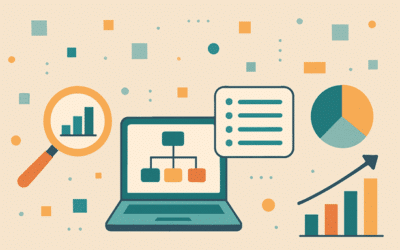What Is Data Literacy? (aka Know Your Data)
What Is Data Literacy?
In simple words, data literacy is the art of knowing your data. The definition extends to reading, working with, analyzing, and arguing with data. Basically, if you can derive relevant information from data, you’re data literate. It’s not merely about reading a few numbers and alphabets. It’s important to find meaning in the data you read and use it to your benefit. For instance, suppose you have a database table with the details of people working in your company. To become data literate, you should know the following:- What all the information in the table means and what its purpose is. For example, this could include the employee ID, employee name, and project ID.
- How you can use the information. For example, the employee bank account and employee ID are needed to map salary details.
Why Is Data Literacy Important for Companies?
Data literacy helps us understand what graphs, numbers, and other categories of data mean. At least that’s what appears to be on the surface. However, the importance of data literacy goes deeper than that. Data-focused firms are adopting data literacy culture with great enthusiasm. They use it for keeping a record of transactions and recommending new products to the customers. Besides, the most useful feature is that you can predict a user’s actions and influence them with data literacy. For instance, if you use Spotify, you must have seen that the app creates a random playlist. Surprisingly, all the songs in the playlist match your music choice. Did you ever wonder how the app does that? Well, when you listen to a few songs, the app collects that data. From that data, the app finds similar songs in the database and merges them into a playlist. Data literacy helps team members make the most out of company data. It helps in streamlining different tasks. This approach also helps team leaders look at the big picture and make crucial decisions. Even data that doesn’t seem important offers useful insights. But you have to be data literate enough to understand the data. As people become aware of the data and how someone can breach it, the chances of a data breach will be reduced. Now that we know why we need data literacy, let’s discuss how to become more data literate.How Can I Become More Data Literate?
Transforming business for good isn’t an easy task. We know that all firms collect, report, store, and analyze data. But what sets one apart is how well they can do these tasks. Companies need to unlock the business value that resides in firm data. And how does this happen? Well, if the employees strive to make the most out of the data, businesses can progress. Addressing risks, cost strategies, and growth is a must for any business to thrive. Of course, by now it’s not a question of what makes this possible. Data literacy is not child’s play, but we can achieve it by adopting a child’s literacy life cycle. Think of it this way: What completes a child’s basic education? They start out with kindergarten to get a basic knowledge of what literacy is. Nothing overwhelming happens at this stage—after all, no one wants to scare a beginner with the big stuff. Then comes elementary school, when a child learns the basics and masters them. High school is a time to get in-depth knowledge. University is where you start using what you learn and see how it impacts the real world. Just as a child becomes literate in stages, the same applies to employees gaining data literacy. So, let’s take a look at how to become more data literate.Understand Data Literacy
You’re probably thinking of a big step that you have to take, right? If yes, take a break and relax. The first step is just about getting the foot in the door. Do you know what can help you become familiar with data lingo? A simple Google search! It doesn’t sound complicated now, does it? Search and read about data management, data analytics, and so on. Also, dive into basics of Excel, data reporting, and data visualization.Learn and Master the Basics
Now, that you understand the language, it’s time to learn the basics of data literacy. As we all know, the internet is the biggest hub of information. In this vast pool of knowledge, you’re sure to find interesting webinars on data literacy. Attend these webinars to dive into the basics and understand them. Also, attend training on Udemy or Coursera, where you’ll find a huge base of programs. You can also participate in data meetups. Sounds strange? Well, people indeed meet in person to discuss various data concepts.Apply Your Knowledge in the Real World
By now, you must be familiar with data literacy terms, and you clearly understand the basics. So, now it’s time to start applying your knowledge to the real world! You can now incorporate the data into the work environment. You can also use your newfound knowledge in educating others. Make YouTube videos or publish blogs. Not only that, make data literacy a priority in planning the strategy and staff meetings. You don’t need to get in depth. Just make your team aware of why data is important and how to read and understand it.Play With the Data
Finally, this is where the fun begins! Now that you’re not a beginner anymore, unwanted stress is off the table. You can analyze, monitor, measure, apply, and use the data to the company’s benefit. Also, play with different ways of presenting the data. At this stage, when you run through a project, you’ll be able to see things better. You can collect test data reports and visualize clearly the current stage of your project. This will also help you realize how important data literacy is for making decisions. All clear about how to be a master of data literacy? Then let’s find out how to create a program that will make your employees data literate.How Can I Establish a Data Literacy Program?
Establishing a data literacy program is the best way to make your team data literate. To go ahead with this, you’ve got to work in steps. So, let’s dive into the details.Bring in a Fluent Data Speaker
Firstly, find someone who can speak data fluently. They can be data stewards, business analysts, or architects. Now, make sure you have some mediators that can translate what the data experts are saying. After all, a beginner’s head will spin if you load them with big words! The learning experience should be such that people can apply what they’ve learned. Space it out in sessions and keep an eye on the feedback. After a session ends, it’s a good idea to arrange a test for people who attended the sessions.Prioritize Business Problems
Data literacy can solve a lot of problems. So, after making your team aware, prioritize business issues. Start applying data analytics to solve them. Mark the areas that need immediate attention—then start attending to them.Motivate and Measure
It’s important to keep employees pumped up about something that’s important to your firm. So, keep them motivated in the form of rewards and incentives. Once their data literacy training is complete, track their performance. As I’ve noted previously, conduct tests to find out gaps in knowledge. You can use them as a baseline for taking further action. However, even after training your employees, the job is not done. Data literacy comes with a few challenges. Let’s find out what those challenges are and how to deal with them.What Are the Challenges of Data Literacy?
Just like the implementation of any new method, data literacy has its own set of challenges. Let’s take a look.Decreasing Customer Trust
Data helps companies determine customer behavior. But what about the intense fear of breaches in the mind of customers? With the increase in data misuse, customer trust is declining. Moreover, people hesitate to share personal data with companies. To overcome this challenge, you need to assure customers that you’re protecting their data. You can use Enov8’s Data Compliance Suite. The suite will provide automated solutions to find any security risk through which breaches can occur. Also, you need to carry out frequent data audits and publish the reports in your company profile. The aim is to provide a clear report to your customers that their data is safe in your hands.Lack of Confidence and Resistance From Workforce
Employees, especially freshers, often aren’t confident about their data-using skills. Thus, this makes them apprehensive about data literacy from the beginning. As a result, this can lead to some resistance from the workforce. How to prevent that? Ensure that your team leads constantly keep on motivating the employees about what they’re good at. Arrange training, identify weak zones, and groom your employees to rectify and become more data literate.Silos in Firms
Data-literate employees are usually part of the BI or IT department. Now, you’d say that makes sense—but do you realize that this creates a barrier between the employees and the people who make decisions? The solution to this problem is to sit all teams down together and have a knowledge-sharing session. Communicate with all employees and make sure that if someone has any issue or query, it’s addressed.Transform Your Company With Data-Literate Employees
Does data literacy sound like a huge deal to you? If so, first establish that it’s nothing to panic about. Secondly, think of it as a beneficial educational experience. Start learning in bits and master one area before moving on to the next. If you own a company, keep in mind that the employees might be nervous to adopt something new. It’s important to motivate them and help them relax about data literacy. So, train yourself, arrange training for your employees, and start knowing your data.This post was written by Arnab Roy Chowdhury. Arnab is a UI developer by profession and a blogging enthusiast. He has strong expertise in the latest UI/UX trends, project methodologies, testing, and scripting.
Relevant Articles
A Detailed Guide to SAP Data Masking
SAP systems handle some of the most sensitive data in the enterprise: financial transactions, HR information, supplier records, customer profiles, operational details, and more. For that reason, copying production data into non-production systems without modification...
Release vs Deployment Management: What’s the Difference?
In the always-an-adventure world of IT service management, there are several key processes that are essential for delivering high-quality services to customers and end-users. Two of the most critical processes are release management and deployment management. These...
7 Tools to Help with Application Rationalization
Application rationalization is the process of identifying which applications an organization should keep, update, consolidate, or retire. Think of it as a financial adviser, but instead of your investment portfolio, it's your application portfolio. Most companies take...
Pairing DevOps with Test Environment Management
For many organizations, DevOps is the best practice for efficiency. However, this model doesn’t come easily as the organization needs to put certain things in place. For example, the firm needs to incorporate the right tools to ensure its delivery pipeline and...
8 DevOps Anti-Patterns You Should Avoid
It’s the normal case with software buzzwords that people focus so much on what something is that they forget what it is not. DevOps is no exception. To truly embrace DevOps and cherish what it is, it’s important to comprehend what it isn’t. A plethora...
An Introductory Guide to Guidewire Data Masking
Testing is an essential part of maintaining a healthy Guidewire environment. But because Guidewire applications handle large volumes of personally identifiable information (PII), simply copying production data for testing or training isn’t an option. This is where...










